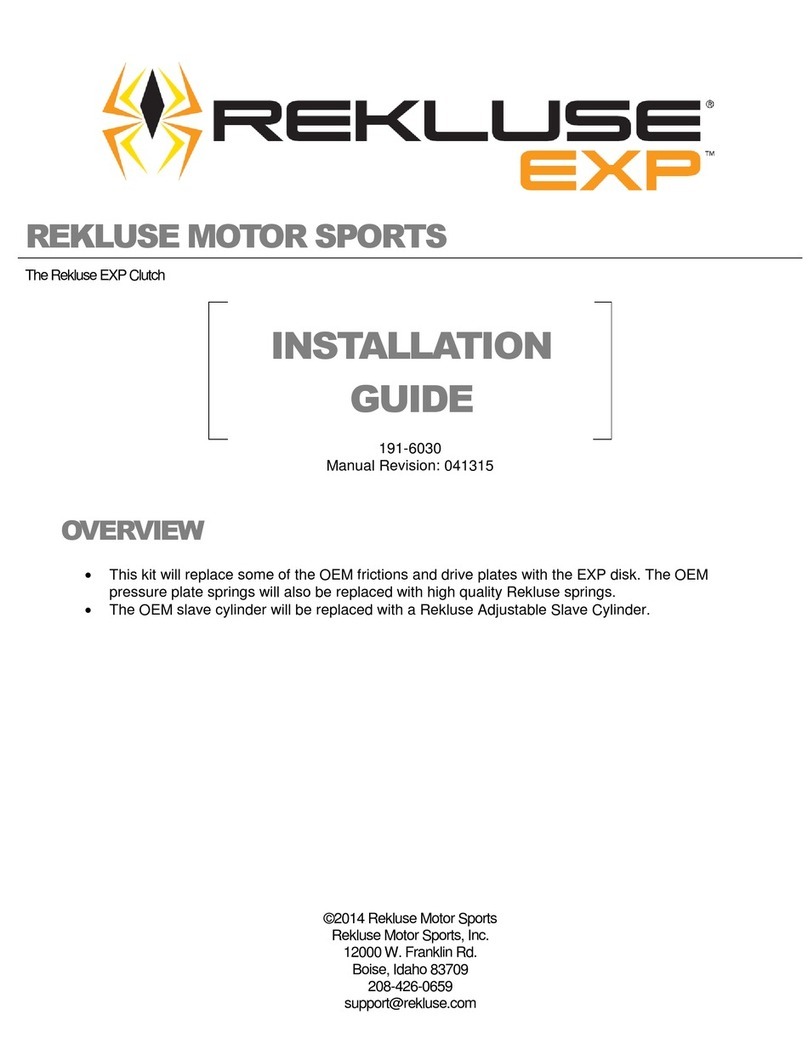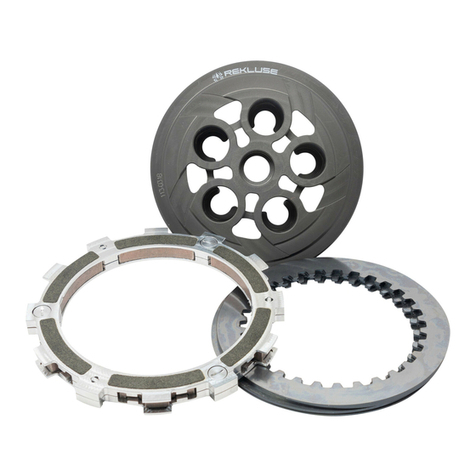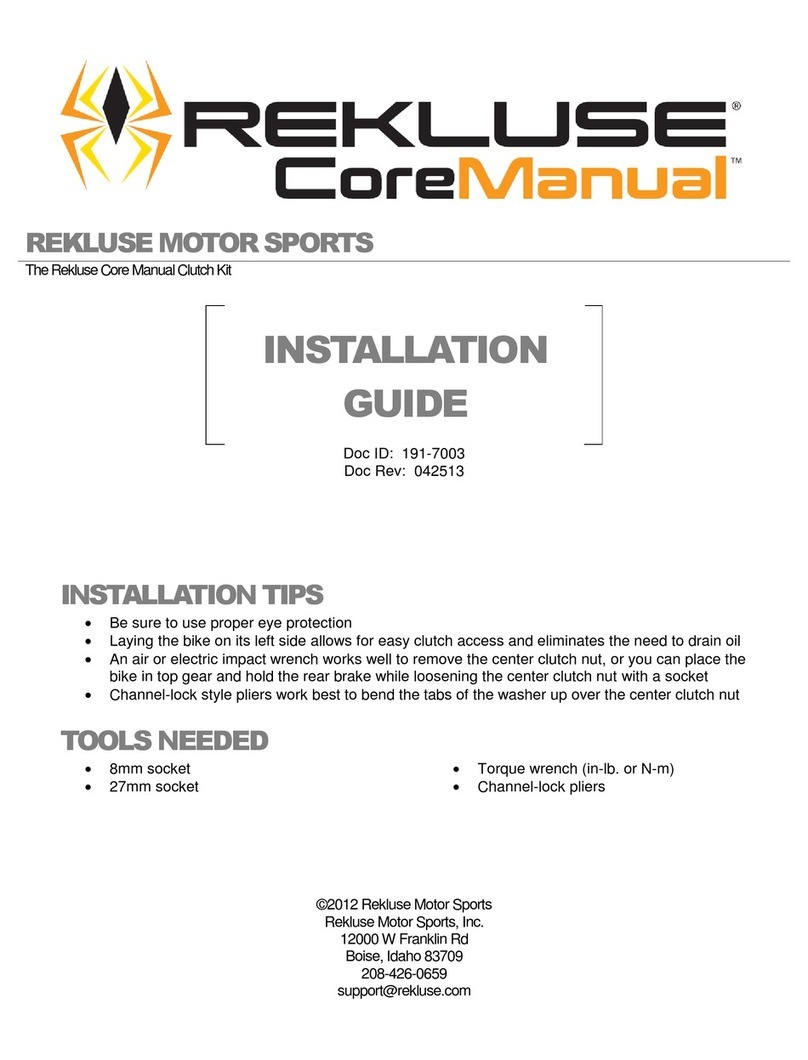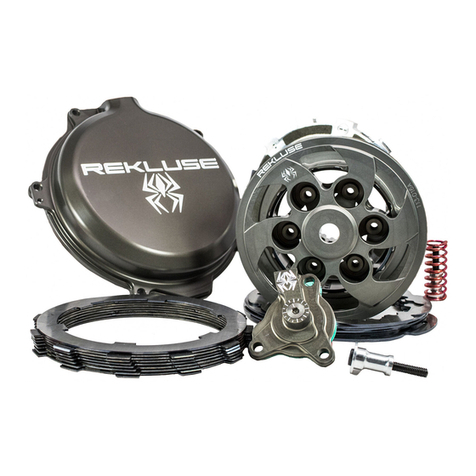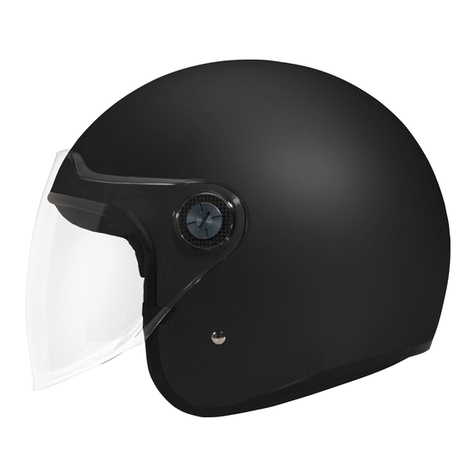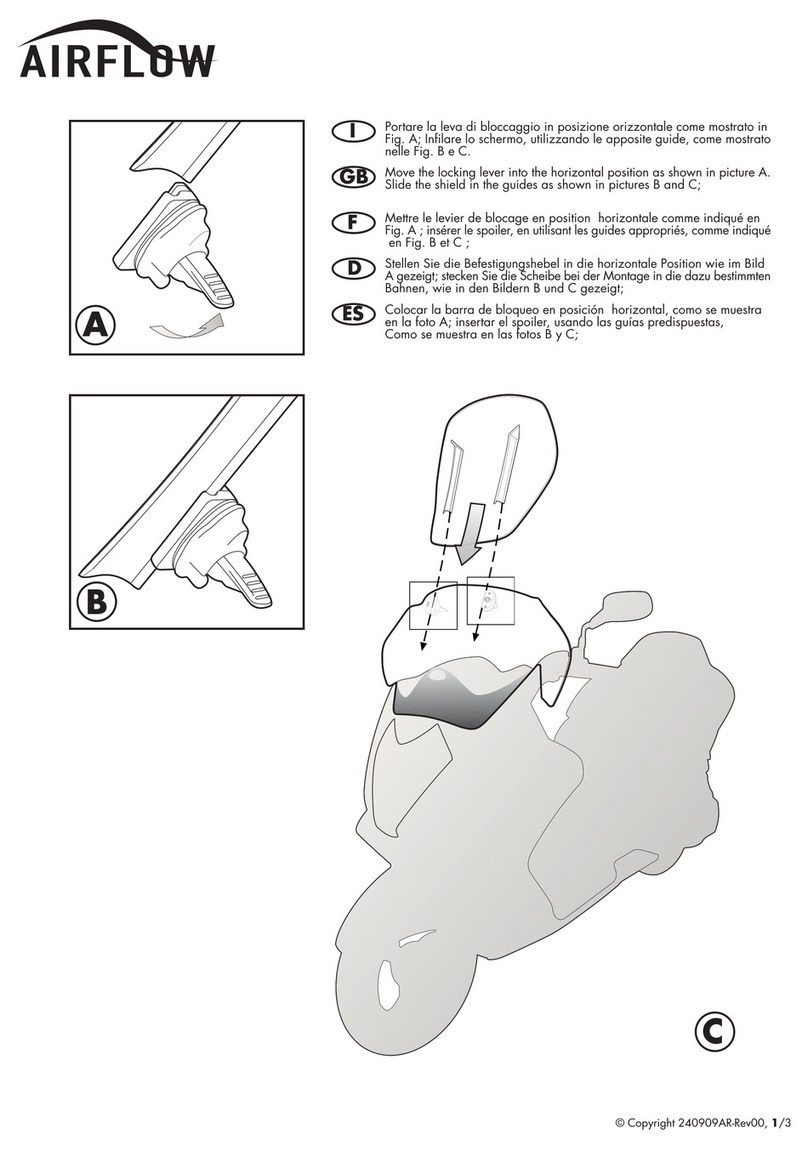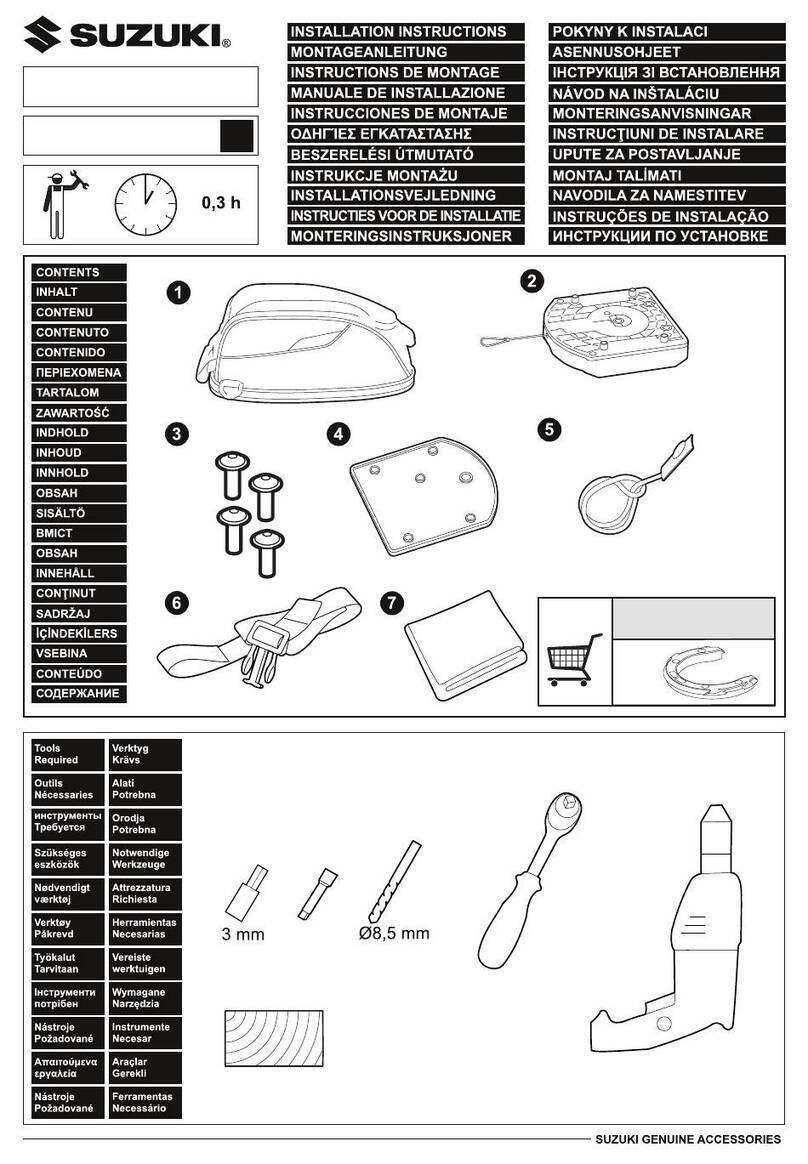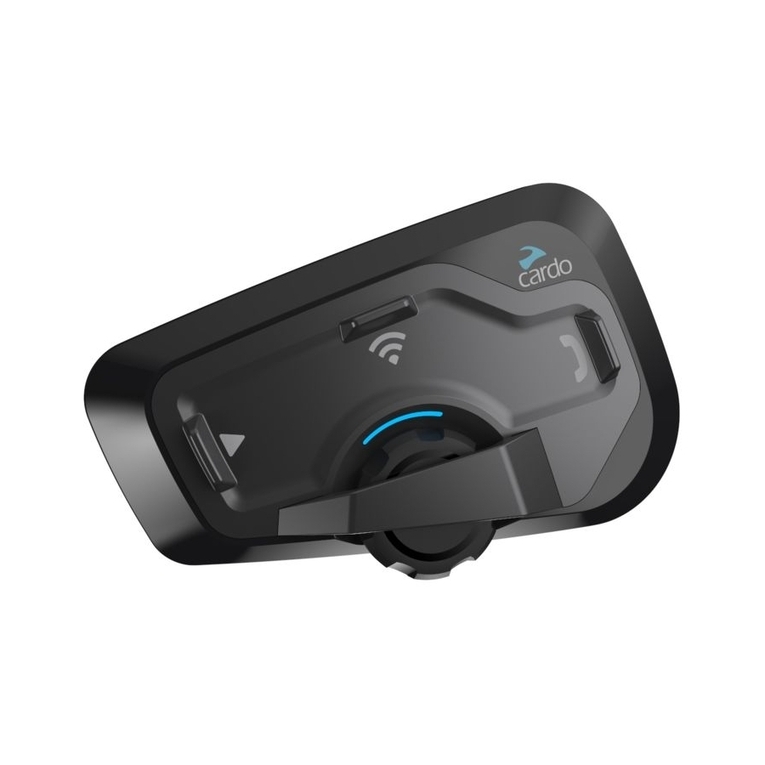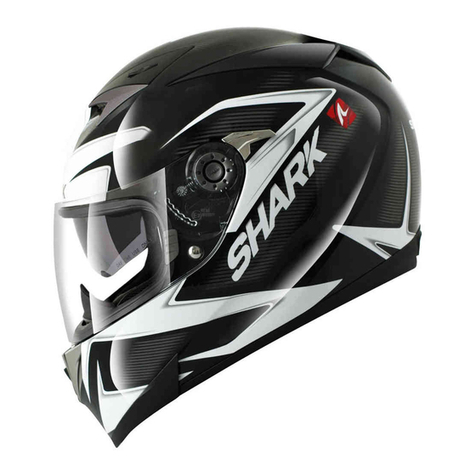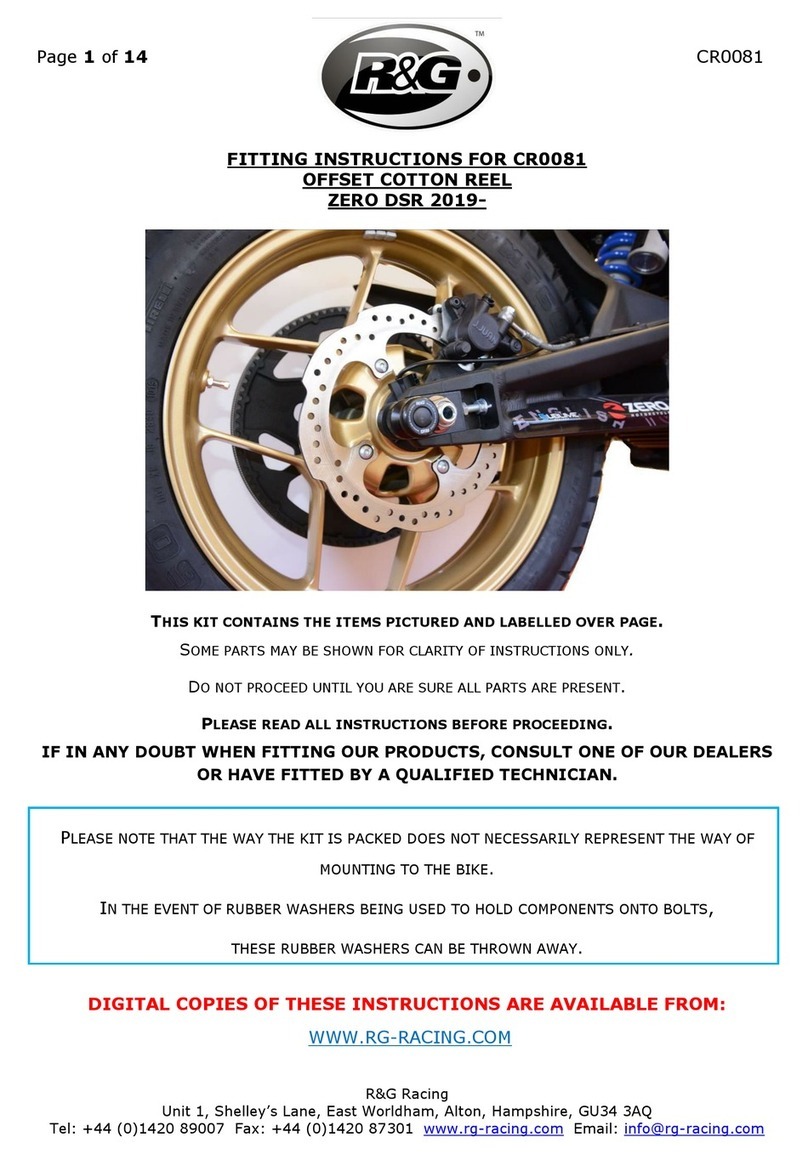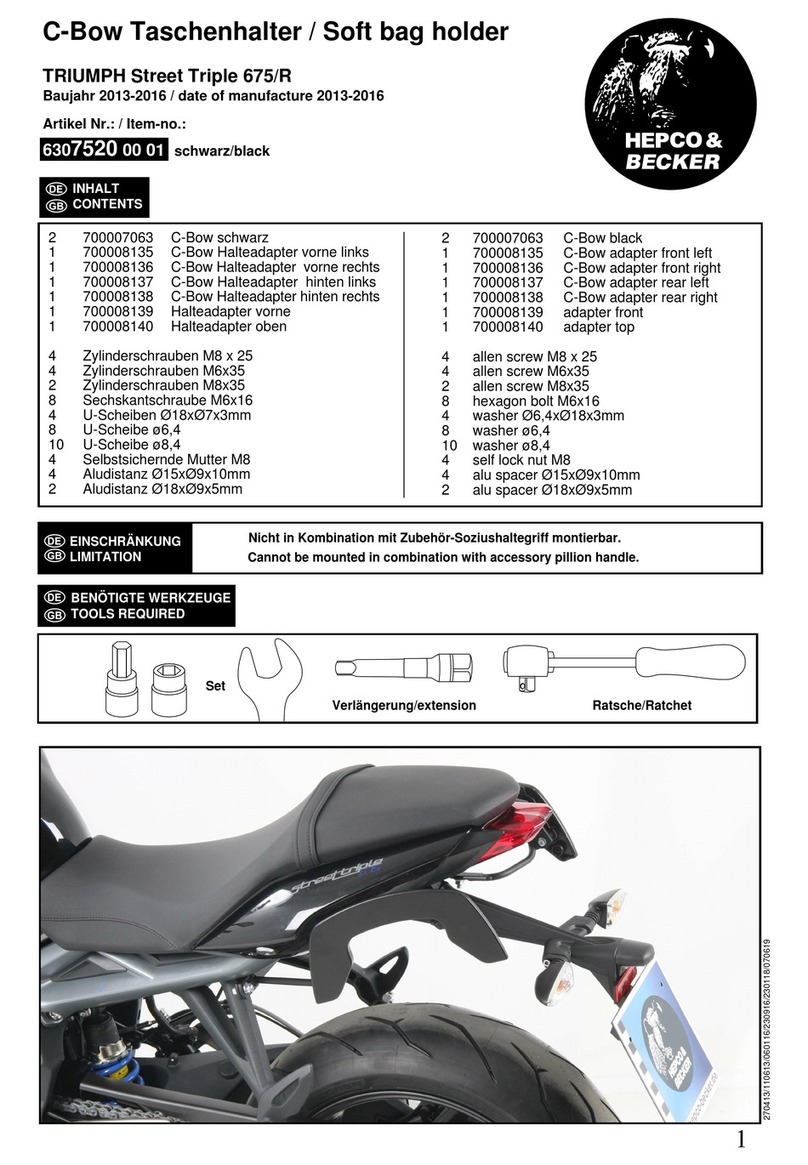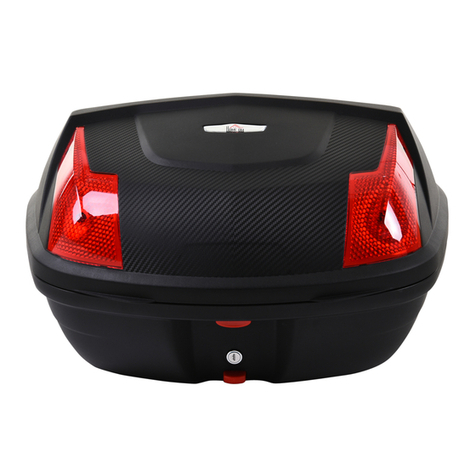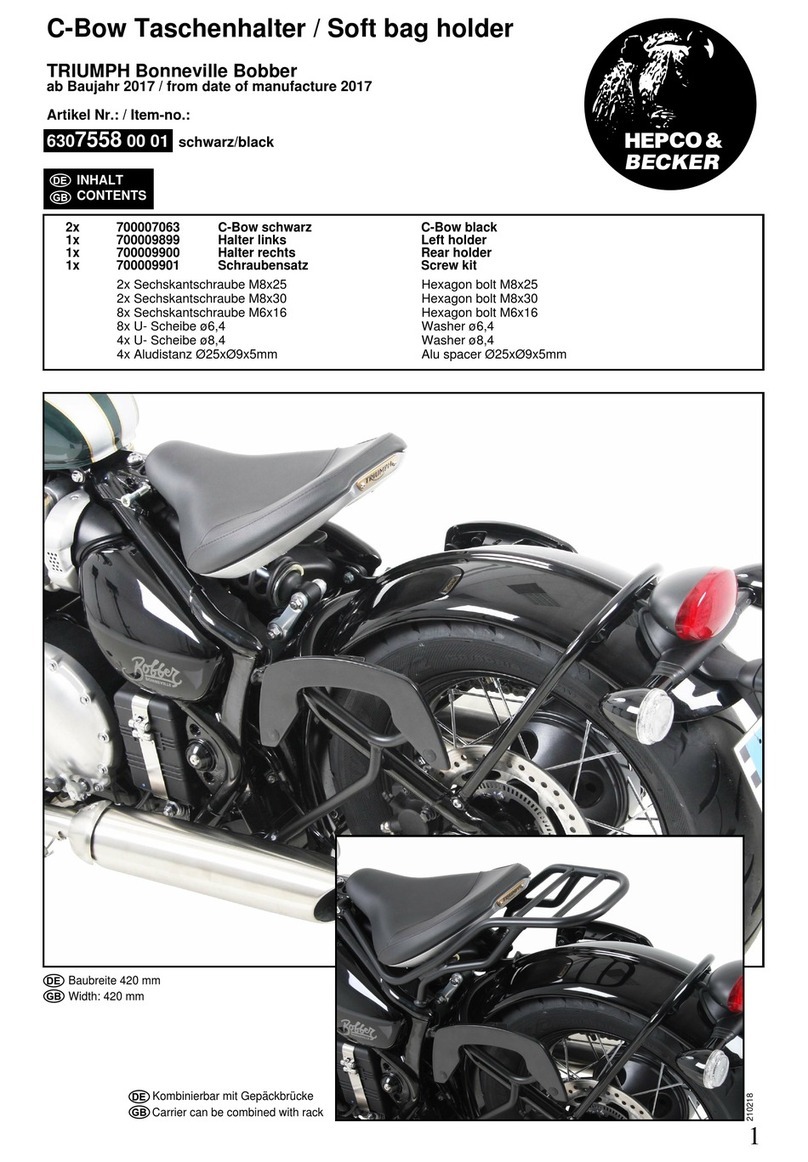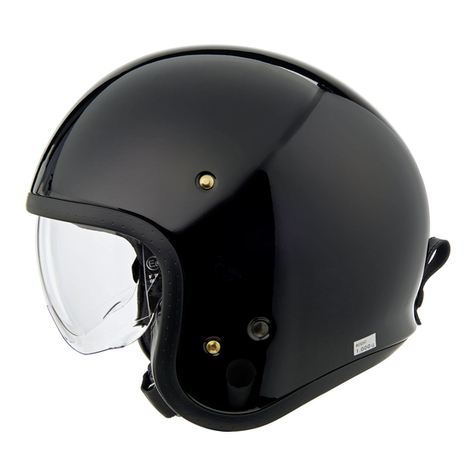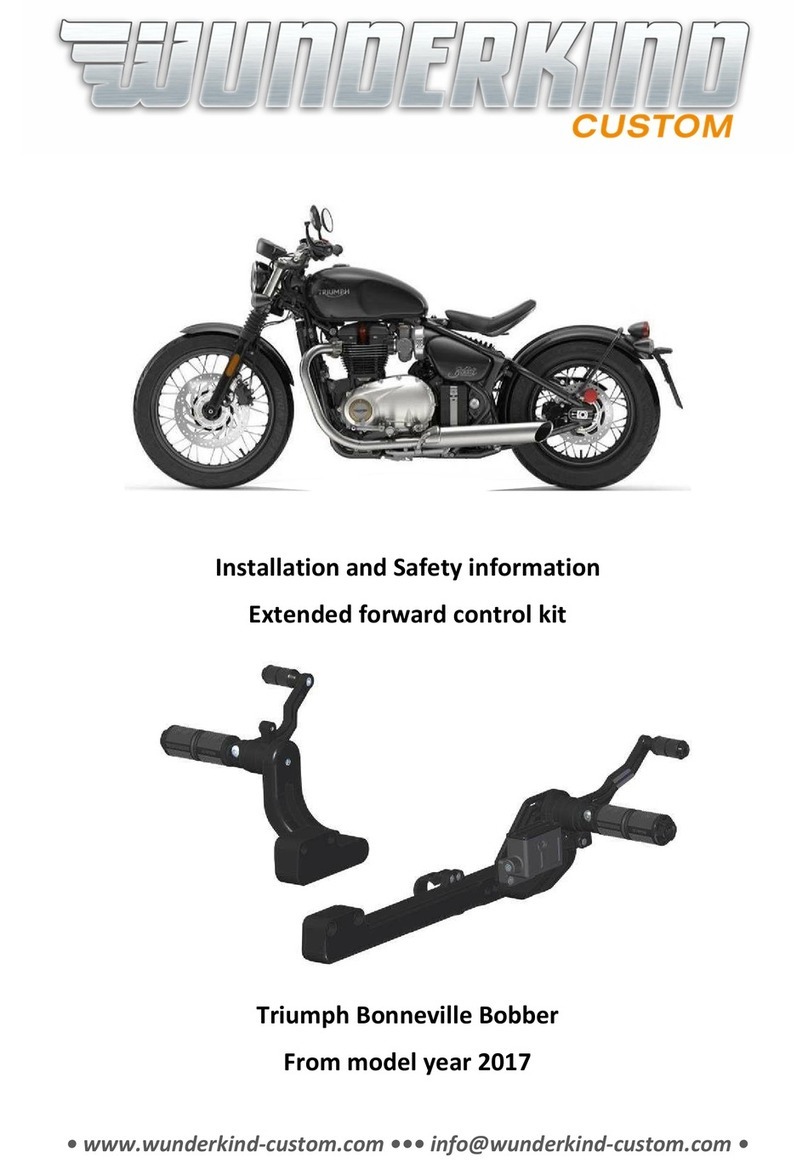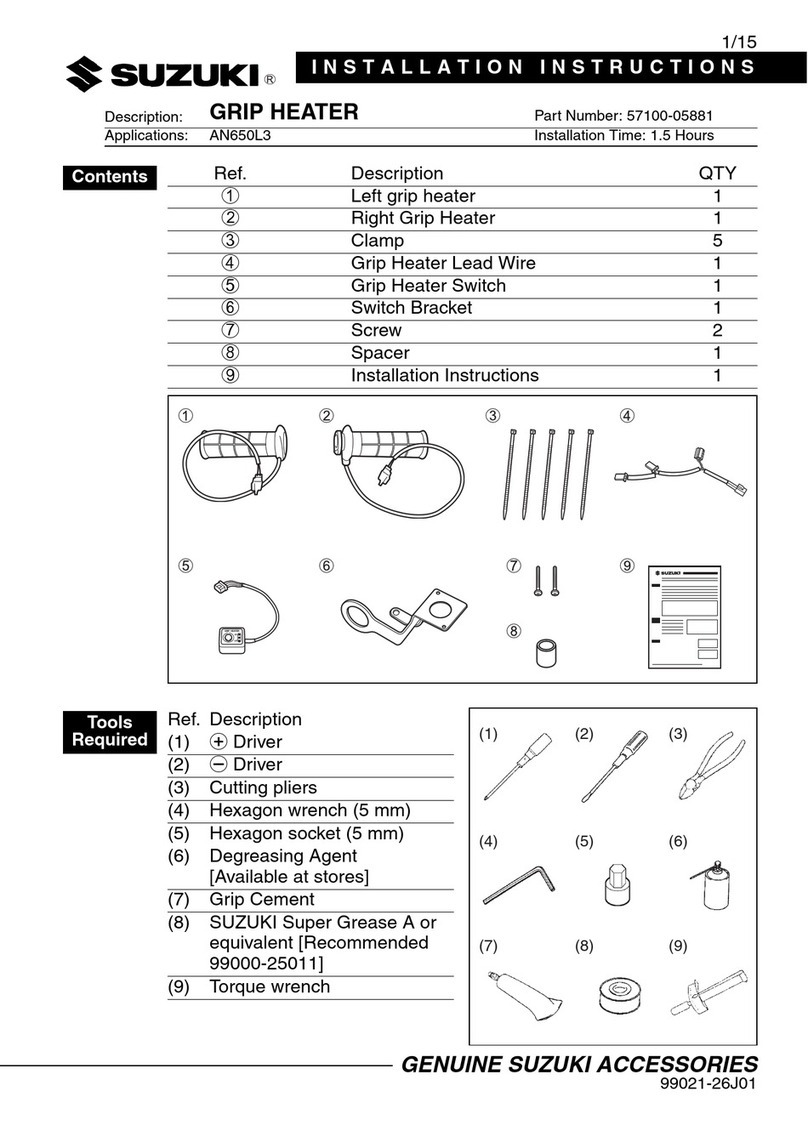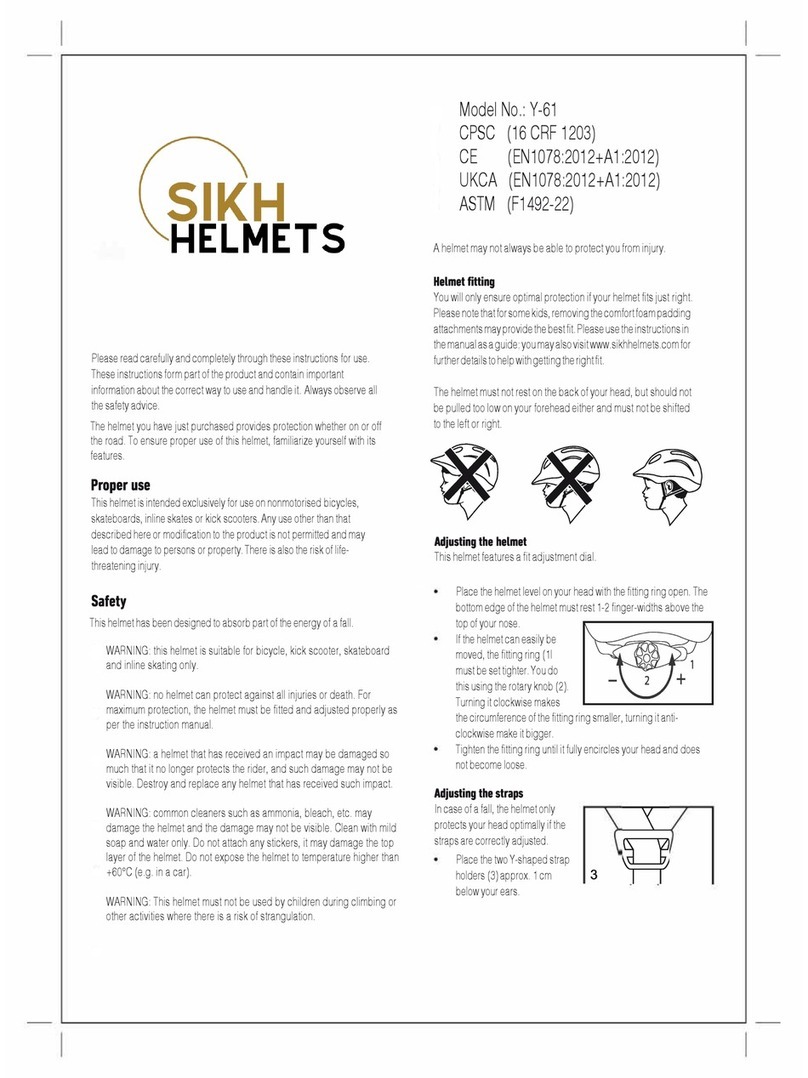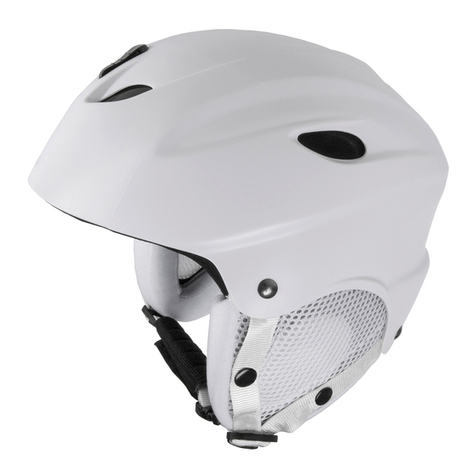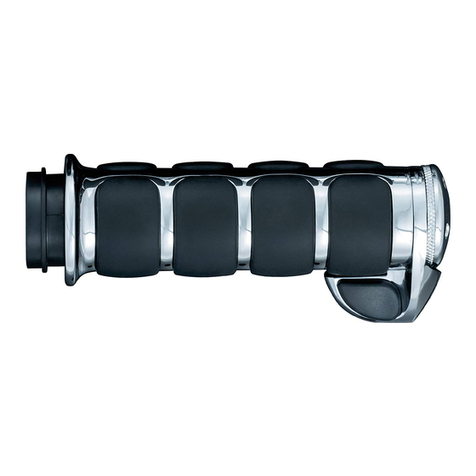
Rekluse Core EXP - Hydraulic Page 5
HUB & CLUTCH PACK
INSTALLATION
6. Install the new center clutch hub on top of the
OEM thrust washer.
NOTE: Rekluse has determined that some models
have slight variance between the center hub and
the main shaft. If your Rekluse center hub seems to
be too tight to fit on the main shaft please follow
these steps:
1. Pre-heat your oven to 200°F (94°C).
2. Using appropriate hot part handling protective
gear, place your center hub in the oven for 10
minutes.
3. Using appropriate hot part handling protective
gear, remove the center hub from the oven and
immediately install on to main shaft.
4. Wait until the center hub has completely cooled.
5. Resume installation at step 6.
This installation process will ensure appropriate
center hub fitment.
7. Torque the nut to 50 ft-lb (70 N-m). Bend both
tabs of the lock washer up.DO NOT OVER
TORQUE, or the clutch will drag and damage
may occur.
8. Install the new clutch pack.
NOTE: The first plate installed is the 0.040”
Rekluse Steel Plate. Proceed to install the rest
of the clutch pack alternating frictions (6x) and
remaining drive plates (6x).
NOTE: Some OEM Baskets have “half-slots” at
the top of the basket tangs. Rekluse products
require that all friction disks, including EXP
disk, are seated into the MAIN (deeper)
basket slots.
